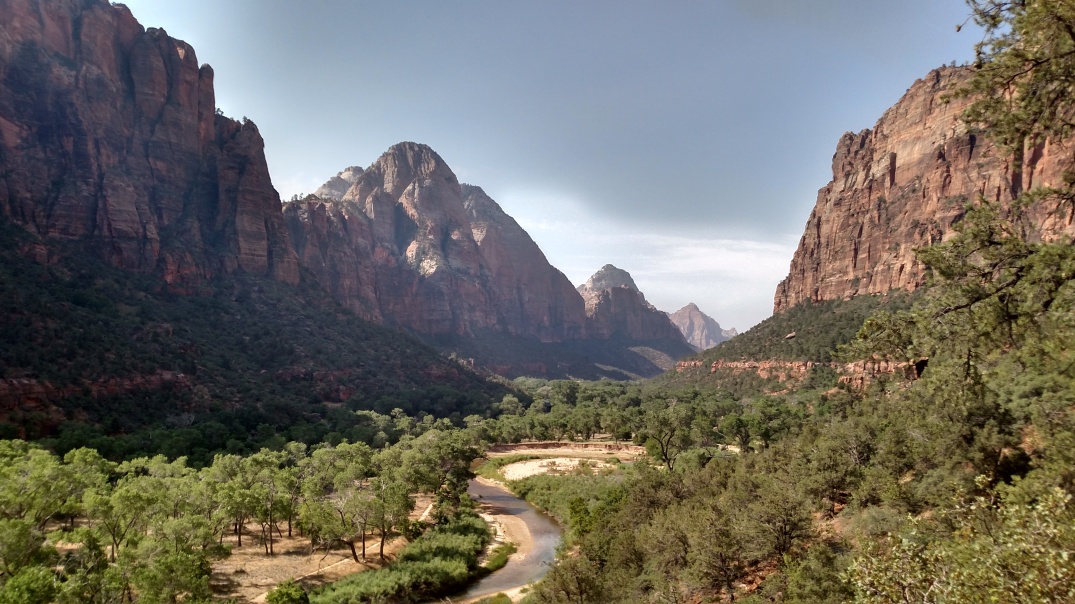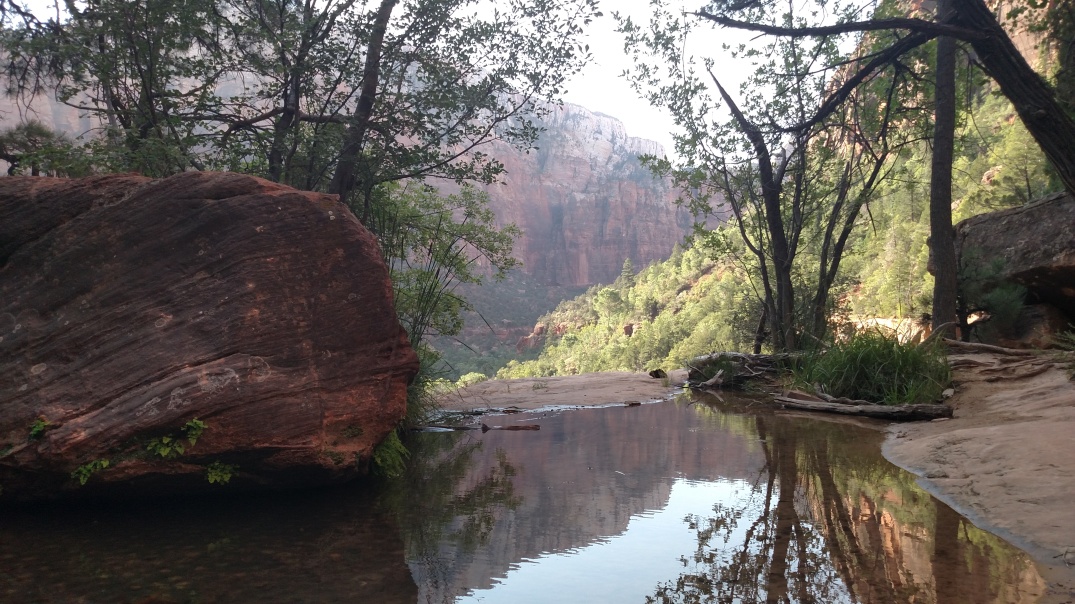
One of the first things that struck me about Zion National Park when I was there in August was the amount of color Zion’s canyons hold.
After being lulled by the monotonous Mojave Desert and the buttes of the Colorado Plateau, the startling shock of green vegetation and the reds and pinks of the sandstone cliffs stand in stark contrast to the surrounding deserts.
At least that was my reaction when I first entered Zion — the deserts of southwest Utah are lovely in a way, and even relaxing in their quiet solitude, but the scrub and buttes become predictable after a few hours worth of driving.
Zion Canyon manages to stay relatively green, even though it averages 16 inches of rainfall per year. Water determines where and how things grow. Wherever there is a trickle of water, there is also life.
When I started hiking Zion I sought water, because that’s where nature is concentrated in the desert. According to the National Park Service, 500 times more species originate at water sources in the desert, compared to the surrounding area.
First, I hiked along the Virgin River, which cuts a ribbon of green through Zion. The Virgin isn’t much to look at on a normal day–I found a shallow and lazy river crowded by large cottonwoods with visitors swimming and wading in its shallows..
Despite lacking size, the Virgin actually packs quite a punch. The river descends sharply, dropping 7,800 feet over its 160 mile course, giving it the force to cut entire canyons (as it did in Zion).
Elsewhere, water is scarce. Luckily, trailheads point towards popular day hikes like the Emerald Pools trail.
I hiked the short trail, and to my surprise found small pools of water teeming with life that supported hanging gardens.
Hiking up through short scrub oak and aspen, I came upon the first pool on the trail. It looked like the type of pool a crazed and thirsty wanderer would stumble into. Really, it was just a place where water could collect runoff from the canyon cliffs. However, the pool was filled with sizable tadpoles. Canyon tree frogs inhabit the pools, and I found their spawn in each and every pool I came across.

Up the trail, a trickle of a waterfall rained on a hanging garden filled with ferns, golden columbine and Indian paintbrush. Hummingbirds busied themselves buzzing between flowers. Moss clung to wet sandstone wherever it could.
I’d stumbled into a fairy garden in the desert. I wondered if these things were the fodder that made mirages.
The larger, and upper most pool stood at the base of the canyon’s cliff walls. Canyon wrens stopped by to take a dip while frogs chilled out on rocks, apparently unalarmed at their relative isolation in a body of water the size of a swimming pool.
The short day-hike gave me an appreciation for the power that water holds over the arid land that I was in. Not only because it determined for where things lived either; by the time I exited the park I’d seen old log jams discarded by flash floods, and I’d driven by a car-sized boulder carved away from the cliffs by water.